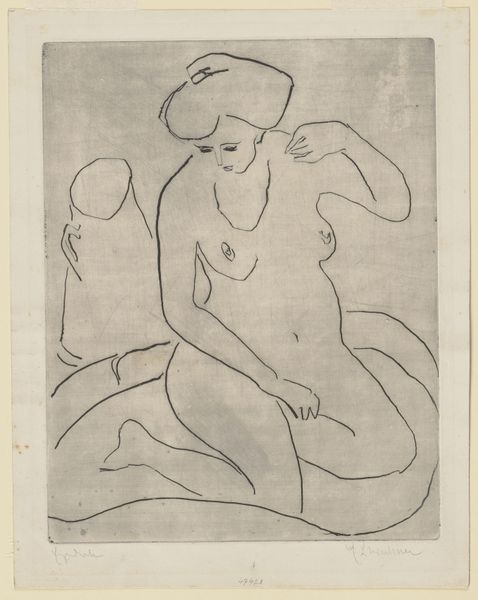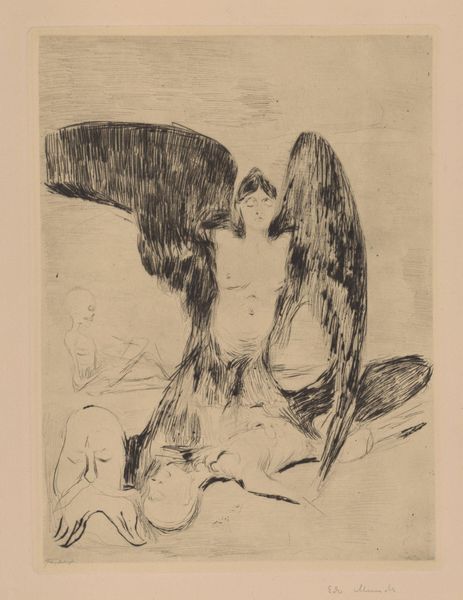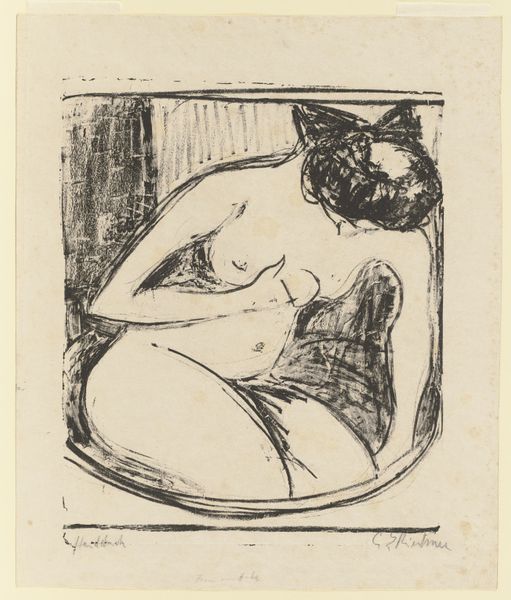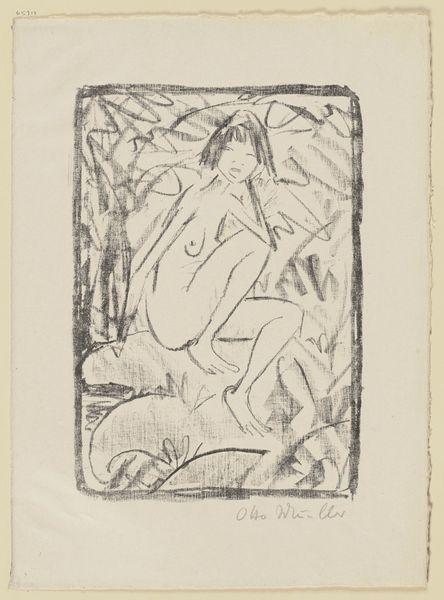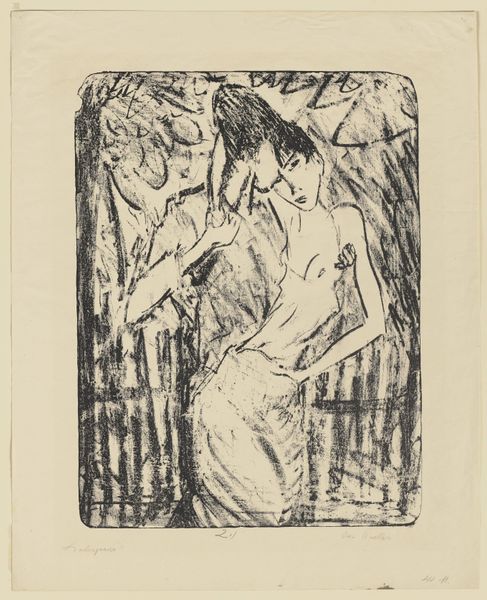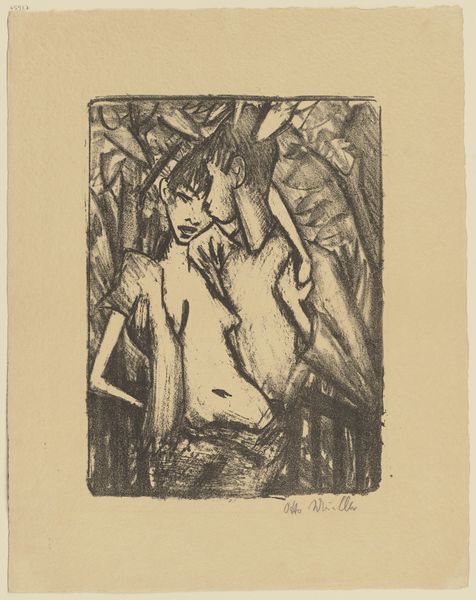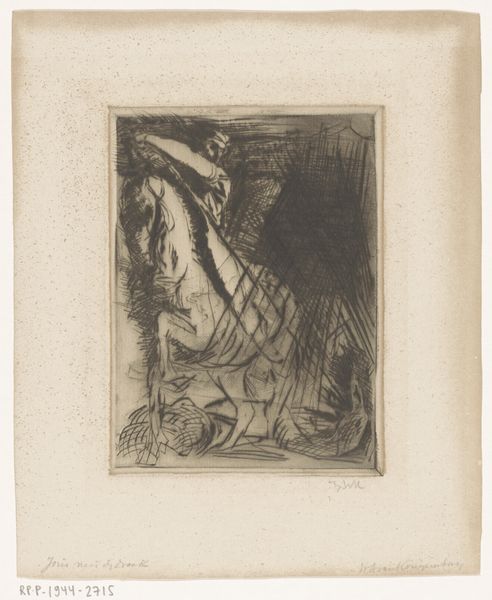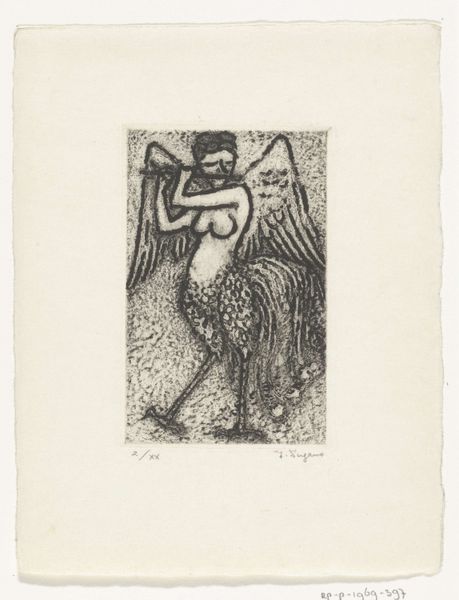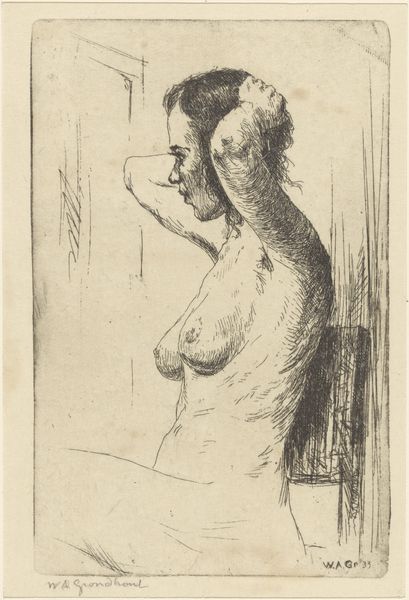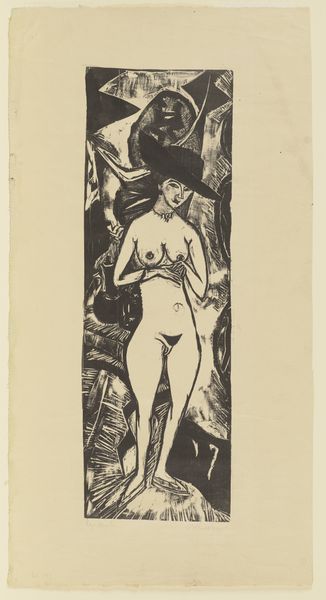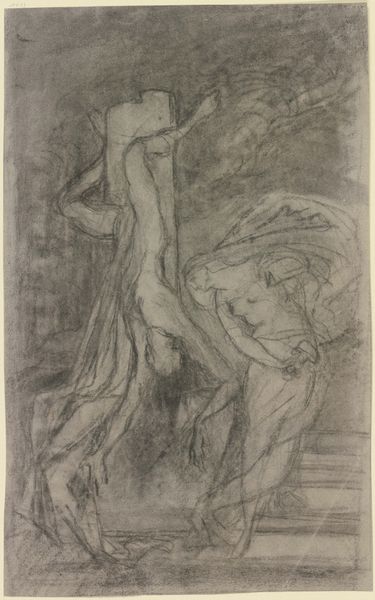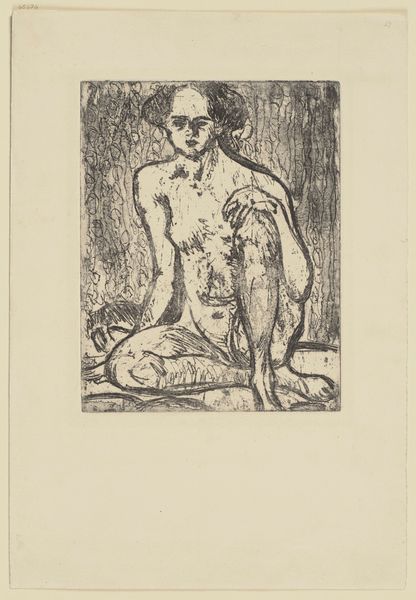
drawing, print, etching
#
portrait
#
drawing
# print
#
etching
#
figuration
#
expressionism
#
line
#
nude
Copyright: Public Domain
Editor: We're looking at Ernst Ludwig Kirchner's "The Kiss" from 1930, an etching currently residing in the Städel Museum. It feels really raw and vulnerable, almost unfinished in its starkness. What's your take on this piece? Curator: The apparent "unfinishedness" is precisely where much of its power lies. Consider Kirchner's broader project: challenging bourgeois norms, questioning institutional authority, and disrupting conventional aesthetic expectations. "The Kiss," though intimate, becomes a public statement. The rawness challenges the idealized images of love and relationships often sanctioned and promoted by the establishment. Editor: So it’s not just a tender moment; it’s a social commentary? Curator: Precisely! Etching, as a medium, allowed for printmaking and wider distribution. So this intensely personal scene also could be widely reproduced, taking on a larger, almost rebellious role against academic painting and sculpture, whose gatekeepers promoted specific aesthetics and suppressed others. Do you think the figures are embracing, or something else? Editor: Their postures seem stiff and unnatural; and yet their facial expressions, while minimalistic, look sorrowful. It's interesting how their physical relationship seems tense but emotional connection profound. I initially saw it as lovers, but maybe it could be a family unit, strained by societal pressures. Curator: Yes, the ambiguity adds to its power. And we must consider Kirchner’s own tumultuous life, marked by mental health struggles and social alienation. Could "The Kiss" reflect a search for connection within a world he found increasingly isolating and hostile? The political upheavals of the time also heavily influenced Kirchner's and other Expressionists' outputs. Editor: I never would have looked at a "kiss" and considered those social, and political elements. It opens a door to the Expressionist artists questioning the status quo. Curator: Exactly. The art world shapes, and is shaped by the world! The placement of the work, its visibility or suppression, are just some of the questions one can investigate through it.
Comments
No comments
Be the first to comment and join the conversation on the ultimate creative platform.
